
Flu Epidemic Increases — 36 States Hit 'Very High' Activity Levels
The CDC recently released an overview map showing the U.S. states affected by seasonal influenza activity. A news outlet has also provided details on the specific states experiencing the highest activity levels.
The Weekly U.S. Map: Influenza Summary Update from the Centers for Disease Control and Prevention (CDC) reveals a sharp increase in flu activity across the United States. Data from Week 6 of the 2024-25 influenza season, which ended on February 8, 2025, indicates widespread respiratory illness.
This report, based on data collected from the ILINet (Outpatient Influenza-Like Illness Surveillance Network), tracks cases of fever, cough, and sore throat — symptoms associated with influenza-like illnesses (ILI), though not necessarily confirmed flu cases.
According to the latest update, several states, particularly in the Eastern, Southern, and Midwestern regions, are experiencing very high levels of influenza activity, marked in dark red and purple on the CDC's map.
Meanwhile, some states in the Western U.S. and parts of the Midwest are reporting moderate to low activity, with flu rates fluctuating in certain regions. The CDC's interactive tracking system allows users to analyze flu trends over several weeks, offering a timeline of how the virus has spread.
Additionally, the map provides an option to view flu activity by State-Level or CBSA (Core-Based Statistical Area) data, giving a more detailed geographic breakdown. Users can also download the latest flu data or the map for further review.
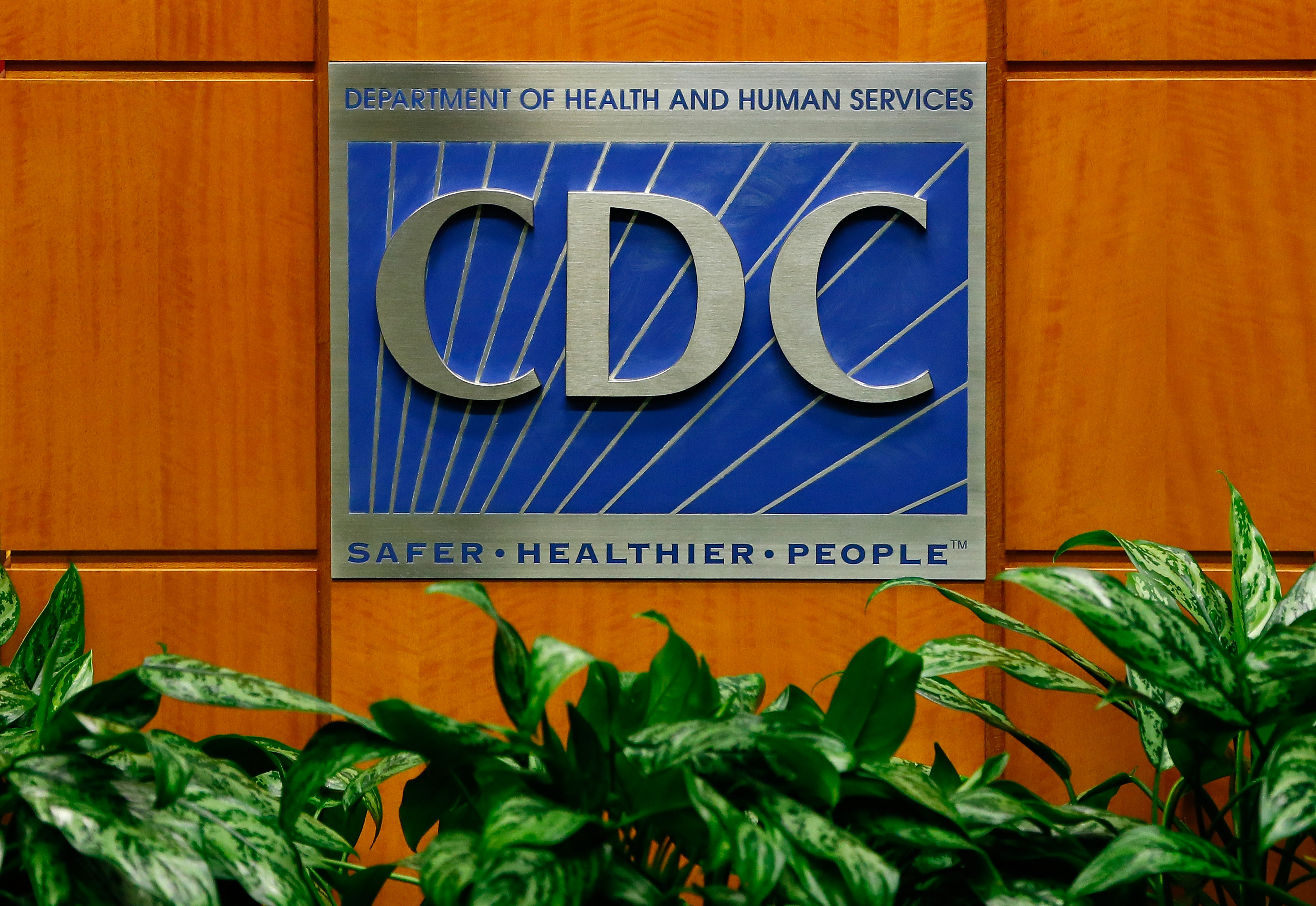
A picture of the CDC's logo and signage at the Tom Harkin Global Communications Center in Atlanta, Georgia on October 5, 2014. | Source: Getty Images
The 36 states classified as the highest and are on a "very high" alert include New York City, New Hampshire, Massachusetts, New Jersey, Maryland, Virginia, Ohio, Michigan, South Carolina, Tennessee, Nebraska, Kansas, New Mexico, Oregon, and Washington.
Closely following them in flu intensity are Maine, Washington D.C., North Carolina, Georgia, Indiana, Arkansas, Louisiana, Oklahoma, and Texas.
Further adding to the list of states on "very high" alert are New York State, Kentucky, Illinois, Wisconsin, Iowa, Missouri, Colorado, Idaho, California, Mississippi, Alabama, and Connecticut. Meanwhile, states such as Wyoming, Arizona, Nevada, South Dakota, Florida, West Virginia, Pennsylvania, and Minnesota remain in the high flu activity category, just below the most severe classification.
Flu levels in North Dakota and Utah have been classified as "moderate," with only Montana, Hawaii, and Alaska falling into the "low activity" category, making them the least affected areas in the nation.
Health experts warn that influenza transmission remains particularly severe in the South. Anita Patel, PharmD, vice president of Pharmacy Health Services at Walgreens in Atlanta, explained that weather patterns, travel habits, and population density contribute to the flu's rapid spread in these regions.
"What we are seeing now is high activity in southern states, with some states that had disease early beginning to recover, like Florida, Alabama and Mississippi," adds Patel.
However, Patel noted that flu activity in the northern and western regions of the U.S. has now reached its peak. She emphasized that cold and dry conditions allow the virus to travel more efficiently, and as temperatures drop, people spending more time together indoors increases the likelihood of transmission.
She added that the most densely populated cold-weather states are seeing higher case rates because social distancing is more difficult, and indoor activity remains a primary driver of infections.
Compounding the issue is the fact that flu vaccination rates remain lower nationwide, raising concerns that more people are experiencing severe illness rather than mild cases. Patel stressed that while the flu vaccine does not always prevent infection, it significantly reduces the severity of symptoms and lowers the chances of hospitalization.
The CDC data also reflects outpatient-reported illness trends, meaning that the rise in cases may also be linked to more individuals seeking medical care rather than staying home to recover.
The CDC's report and Patel's reflections come over a month after the health organization reported on the occurrence of the first severe case of bird flu in the U.S., which claimed the patient's life.
According to the Louisiana Department of Health (LDH), the Louisiana patient was over 65 years old and had underlying medical conditions.
Following exposure to both wild birds and non-commercial backyard flocks, the late patient contracted highly pathogenic avian influenza (HPAI), otherwise known as H5N1, which led to their hospitalization. Amid the LDH's report on the death, the department issued a message to the loved ones of the deceased.
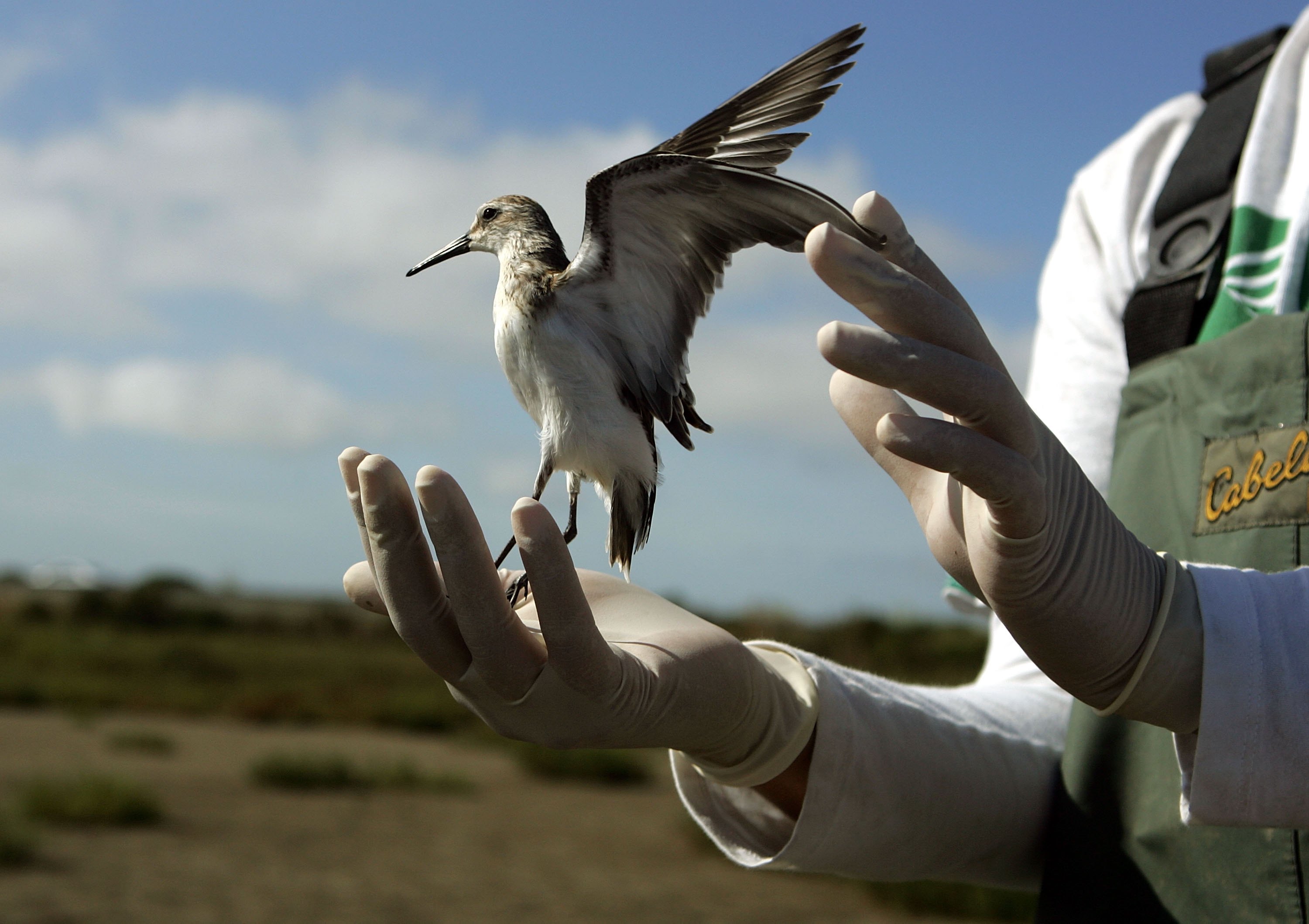
USGS Biologist Science Tech Brooke Hill releases a Western Sandpiper after testing it for the highly pathogenic H5N1 avian influenza in Sonoma, California on August 16, 2006. | Source: Getty Images
"The Department expresses its deepest condolences to the patient's family and friends as they mourn the loss of their loved one," they said. They also clarified there would be no further updates or details regarding the deceased patient.
To safeguard the public, the LDH also divulged measures civilians could take to avoid H5N1 infection.
They urged people to avoid sources of exposure, which meant that individuals should have abstained from coming into direct contact with wild birds and/or any other animal that may have been infected with bird flu viruses or suspected of having them.
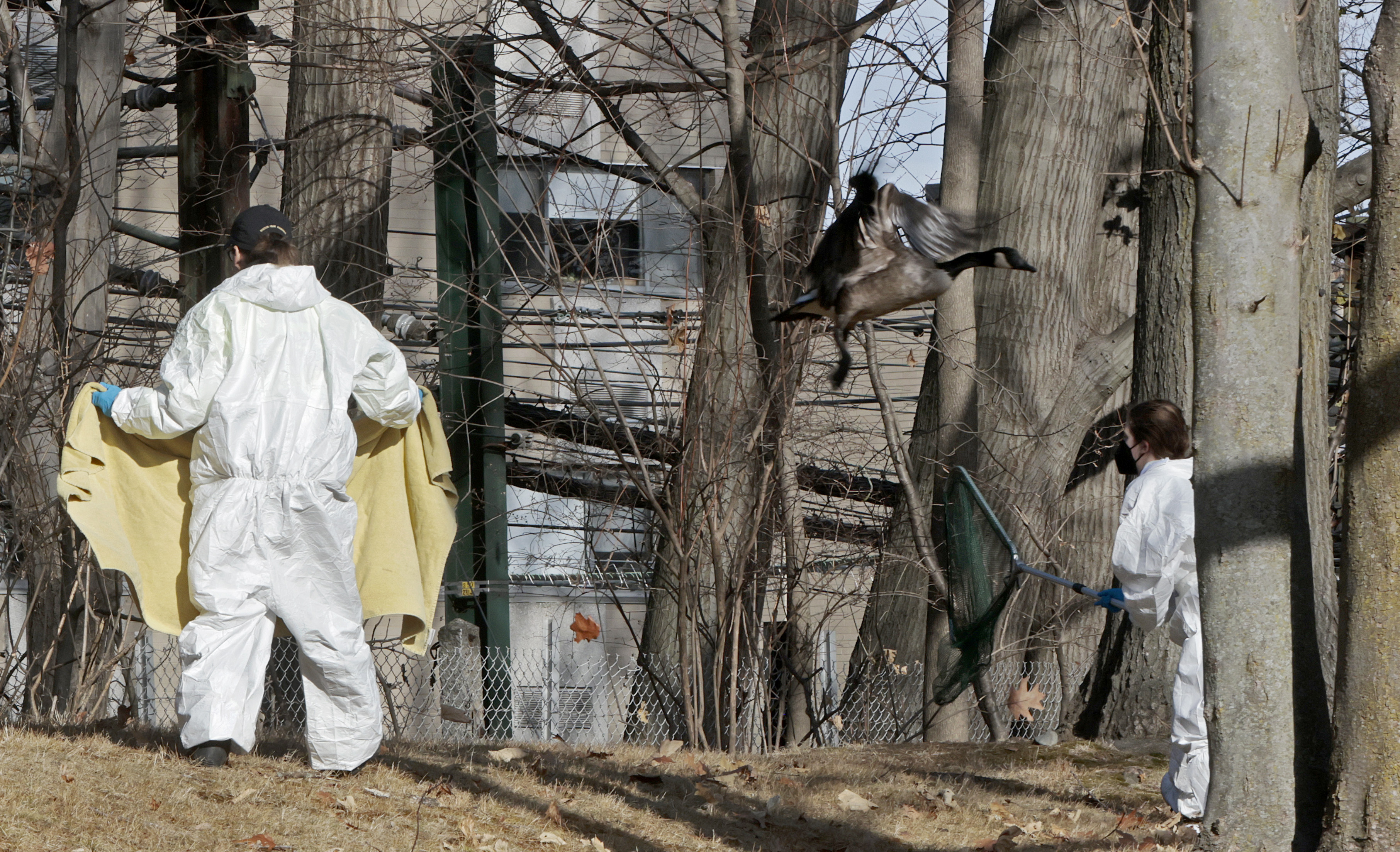
New England Wildlife Center staff rescuing birds affected by an oil spill in Brookline, Massachusetts on December 9, 2024. | Source: Getty Images
No sick wild animals were to be brought into residences, and people were instructed to avoid touching them or the droppings of the wild animals and dead ones. The LDH also warned civilians to keep their pets away from the aforementioned wild and dead animals.
Fourth on their preventative measures list was to avoid consuming undercooked or uncooked food. They urged people to cook eggs, poultry, and other animal products to the correct temperature and emphasized the avoidance of cross-contamination of cooked and raw food.
People were also urged to inform either the Louisiana Department of Agriculture and Forestry Diagnostic Lab or the USDA toll-free at 318-927-3441 and 1-866-536-7593, respectively, of sick or dead birds or animals. Those working on dairy or poultry farms were instructed to speak to their medical provider about getting seasonal flu vaccinations.
While it would not make them immune to contracting avian influenza viruses, it would reduce the risk of co-infection with flu and avian viruses. However, the LDH also warned that while the risk of contraction remained low for the general public, those who work with birds, cows, or poultry, or have any recreational exposure to such, stood a greater chance of being infected.
The LDH also noted, "If you have been exposed to sick or dead birds or other animals or work on a farm where avian influenza has been detected, watch for respiratory symptoms or conjunctivitis."
People who developed symptoms within ten days after exposure to sources were urged to inform their healthcare provider and express their concern about avian influenza.
Doing so would help the medical professional administer the appropriate advice on treatment and testing. "Stay home and away from others while you have symptoms," added the LDH.
Aside from disclosing steps of prevention and the grim news about the U.S.'s first H5N1 death, the LDH had confirmed that they found no evidence of person-to-person transmission or additional cases. This was apart from those reported following their extensive public health investigation.
Concerning the situation at that time regarding cases, the Centers for Disease Control and Prevention (CDC) had reported a confirmed total of 66 human cases in the U.S. during the 2024 outbreak. Several cases were prevalent in U.S. dairy and poultry workers.
The human cases were spread across California, Colorado, Iowa, Louisiana, Michigan, Missouri, Oregon, Texas, Washington, and Wisconsin.
Regarding the exposure sources, of the 37 cases in California, 36 were reported to have come from dairy herds (cattle), and one had an unknown exposure source. There were ten cases in Colorado, one of which stemmed from dairy herds (cattle), and nine came from poultry farms and culling operations.
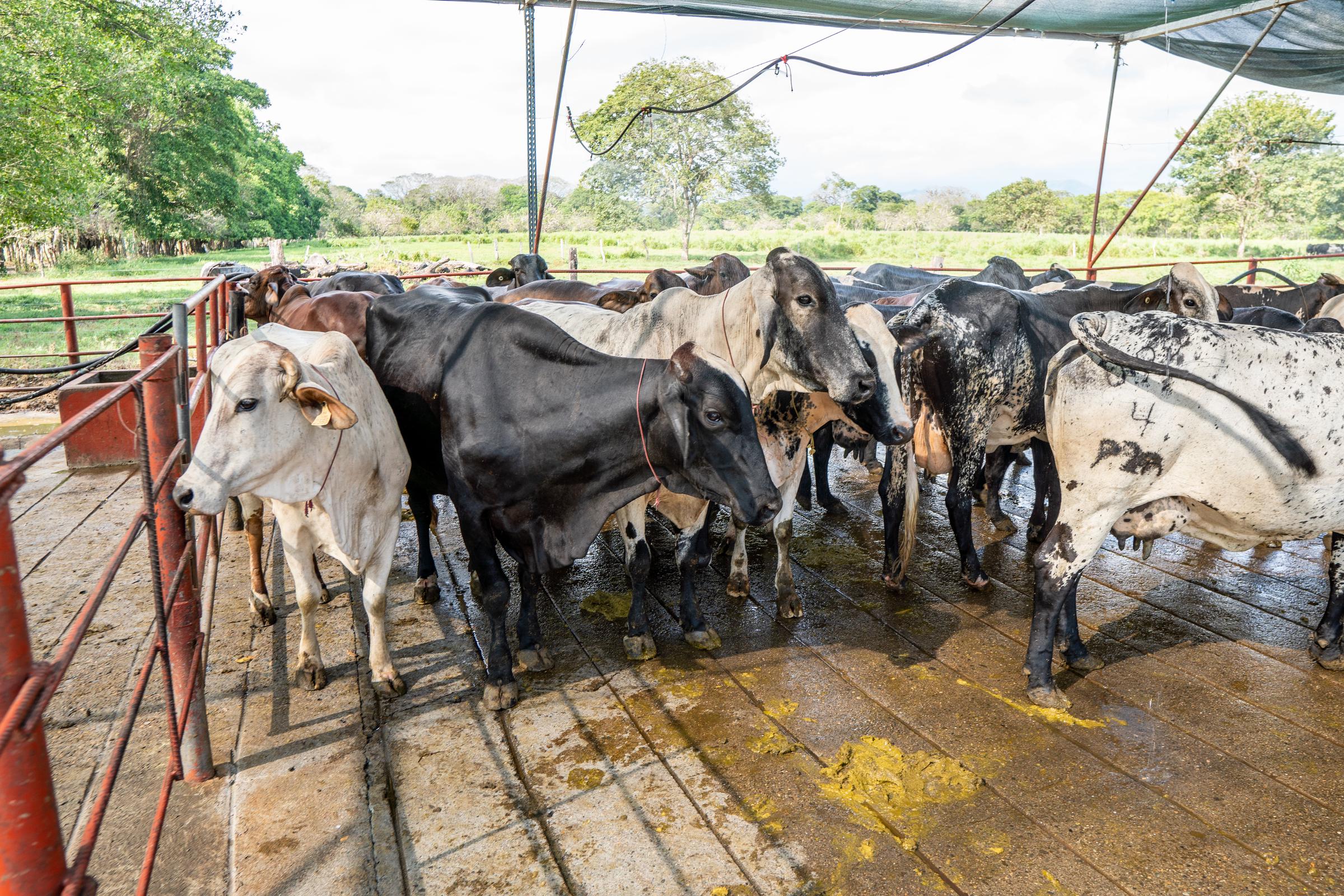
A cattle ranch in Panama in 2024. | Source: Getty Images
The one case in Iowa's exposure source was reported to be from poultry farms and culling operations, while the one in Louisiana (the case where the patient died) was from other animal exposure.
Michigan's two cases stemmed from dairy herds (cattle), and the one case in Missouri had an unknown exposure source. Meanwhile, Oregon and Wisconsin each had a case with an exposure source of poultry farms and culling operations.
The exposure source for Texas' case was dairy herds (cattle), and all 11 of Washington's cases stemmed from poultry farms and culling operations. Additionally, the CDC reported that as of January 3, 2025, H5N1 bird flu had been detected in 10,922 wild birds.
Before divulging the data — which the CDC made clear was subject to continuous updates as the situation progressed — and sharing the news about the first death from the virus, an investigation was underway to identify the source of the Louisiana patient's H5N1 bird flu infection.
At that time, before the exposure source was confirmed, the patient was believed to have come into contact with deceased birds from backyard flocks. This marked the first reported U.S. case of H5N1 bird flu connected to backyard flock exposure.
Genomic analysis of the H5N1 bird flu virus from the Louisiana patient showed that it belonged to the D1.1 genotype, linked to detections in wild birds and poultry in the U.S. and human cases in Canada and Washington.
This differs from the B3.13 genotype in dairy cows, some human cases, and poultry outbreaks. At the time, the CDC was conducting further genomic sequencing and virus isolation from the sick patient.
A single severe H5N1 bird flu case in a person is not unusual, as this virus has caused serious illness and fatalities in other countries. The CDC has maintained that the overall public health risk from H5N1 bird flu is low.
Nevertheless, California Governor, Gavin Newsom, declared a State of Emergency to expedite the state's response to H5N1 bird flu after cases emerged in Southern California dairy cows.
The virus had spread across 16 states since its first confirmed detection in Texas and Kansas on March 25, 2024. Bird flu was first identified in the U.S. wild bird population in South Carolina in January 2022, followed by California in July 2022.
An outbreak in dairy cows was reported in Texas and Kansas, prompting CDFA to monitor California herds. Last month (December 2024), 61 confirmed human cases were reported across seven states, including 34 in California.
Newsom explained that the State of Emergency enabled greater flexibility in staffing, contracts, and containment measures. He informed the public that California had implemented the nation's most extensive testing and monitoring system to address the outbreak.
The governor shared, "We are committed to further protecting public health, supporting our agriculture industry, and ensuring that Californians have access to accurate, up-to-date information."

California Governor Gavin Newsom speaks during a press conference in Los Angeles, California, on October 27, 2024. | Source: Getty Images
As the government worked to enhance public health, people were urged to reduce their risk of H5N1 exposure. If exposure remained unavoidable, personal protective equipment (PPE), such as gloves, safety goggles, N95 respirators, and disposable coveralls, had to be worn to minimize risks.
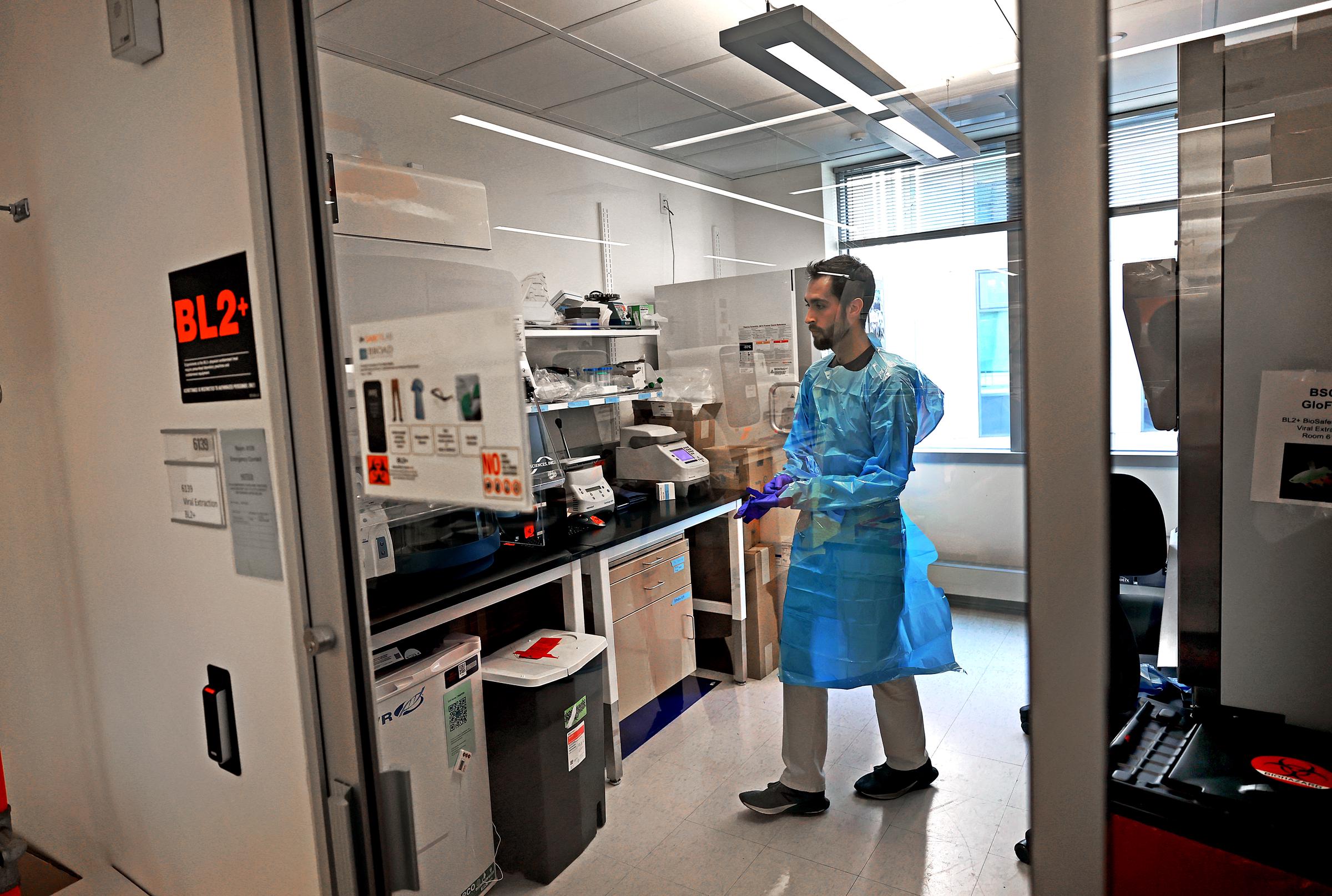
Jon Arizti Sanz, PhD, Postdoctoral Fellow testing purchased milk at area grocery stores for the presence of bird flu, in Cambridge on May 14, 2024. | Source: Getty Images
For poultry and livestock workers, employers were encouraged to update workplace health and safety plans to address potential H5N1 exposure. They were also urged to conduct hazard assessments to identify high-risk tasks.
Additionally, when employers implement control measures, such as isolating infected animals and ensuring proper hygiene, they can significantly reduce risks.
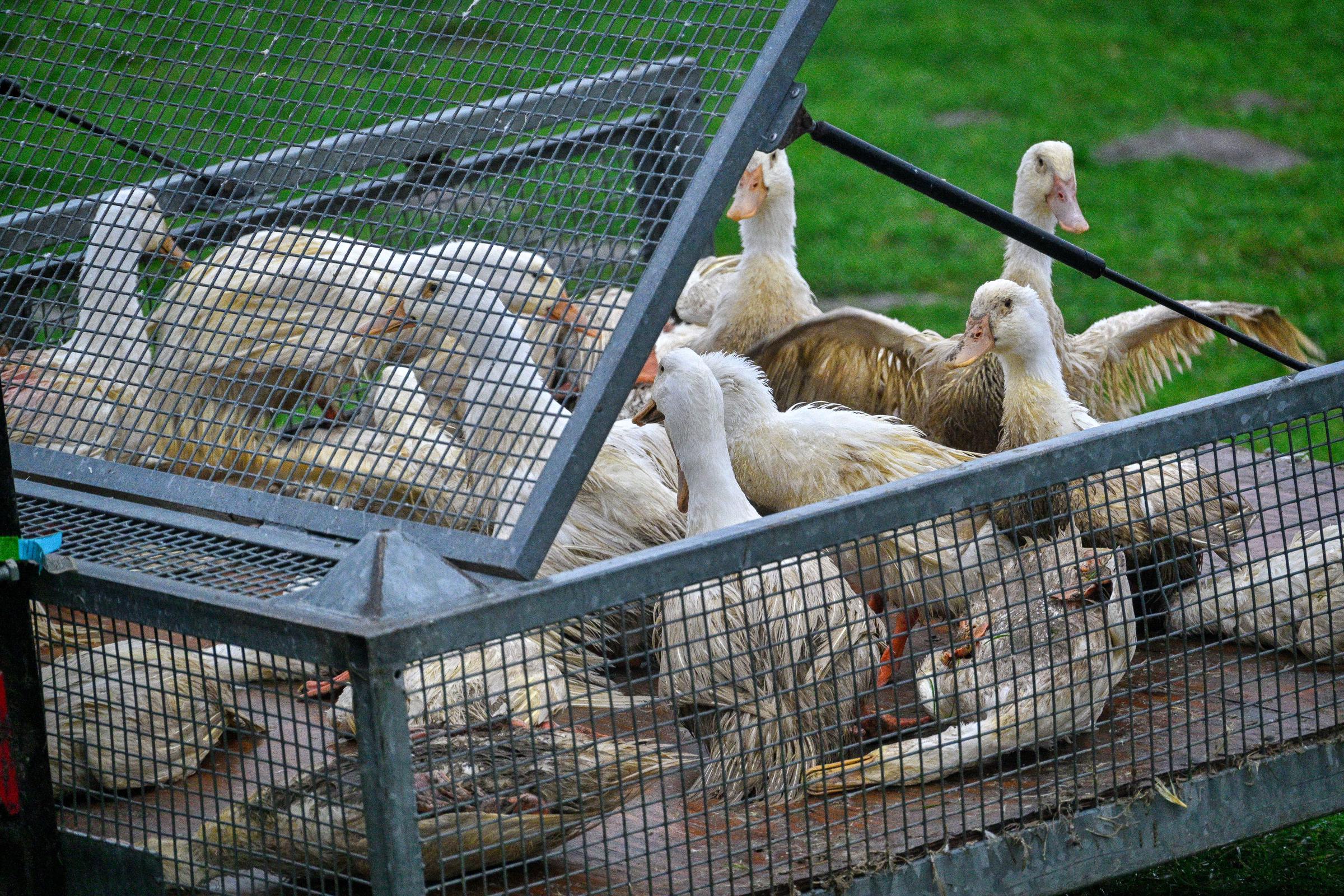
Ducks with bird flu also known as poultry flu are collected and put in a container in Zarnewanz, Germany on November 28, 2024. | Source: Getty Images
Additional measures employers were expected to take include providing workers with appropriate Personal Protective Equipment (PPE) to safeguard against contact with infected animals or contaminated materials. By following these recommendations, the spread of H5N1 can be effectively mitigated.
The information in this article is not intended or implied to be a substitute for professional medical advice, diagnosis or treatment. All content, including text, and images contained on news.AmoMama.com, or available through news.AmoMama.com is for general information purposes only. news.AmoMama.com does not take responsibility for any action taken as a result of reading this article. Before undertaking any course of treatment please consult with your healthcare provider.
